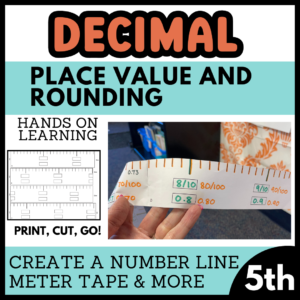So what is place value? It’s fairly simple: It’s the value of a digit in a number, right? The problem is kids need hands-on experience to understand this!
Learning the concept of place value is a foundational skill that will help students perform all four math operations: multiplication, division, addition, and subtraction. So it’s a lesson that just can’t be skipped!
I’ve found that the best way for students to learn this concept is by teaching it with the metric system? Why? Because the metric system is based on decimals.
Decimals represent fractions and mixed numbers with denominators that are powers of 10 , like 10,100,1,000. “Decimal” comes from the Latin root decem, which means “ten.”
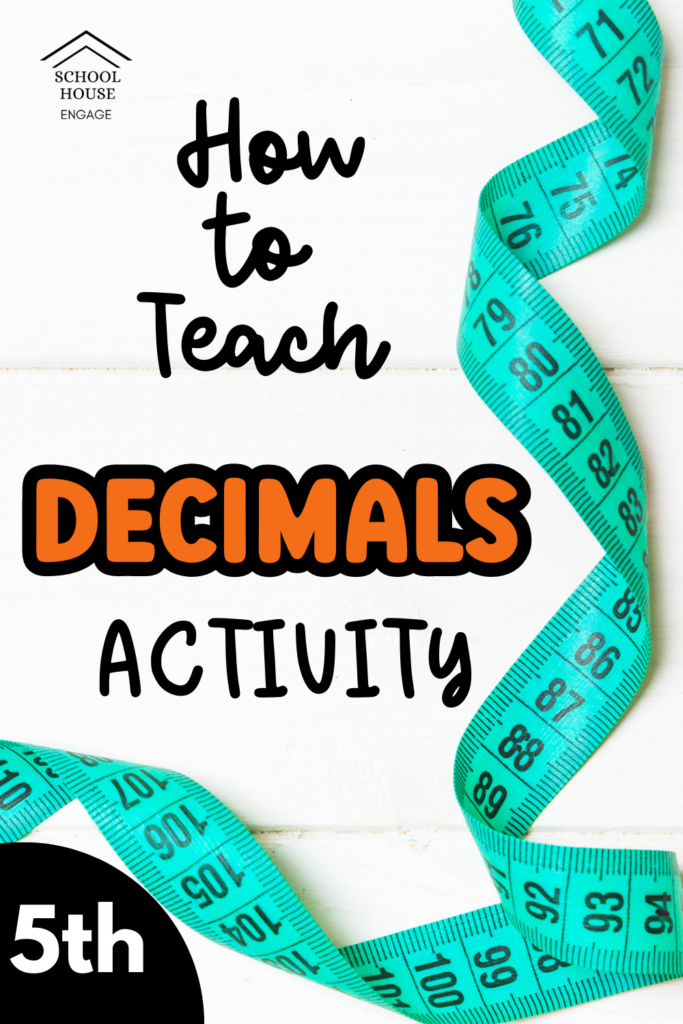
How to Introduce Decimals to Students
So what’s the best way to introduce decimals to students? Like anything in math, you want to start with something concrete that students can touch and manipulate. I’ve had success with having students create their own meter tape.
The problem was that I had to cut long pieces of butcher paper into strips for each student that measured exactly a meter. It took so long to do this and was a pain!
Like I don’t have enough to do as a teacher! Then my students started drawing their decimeter and centimeter lines unevenly, despite the fact that I was guiding them to create measurements with their ruler.
You can see one example in the picture below. This particular student didn’t realize that she needed to use the whole strip of the paper. I felt like the whole lesson was a mess and I knew that there had to be a better way!

Hands-on Decimal Activity
So I decided to create a meter tape on a PDF that I just printed and handed out to students. I also created a video to show them how to cut and glue their meter tape together step-by-step. This made my life so much easier!
Then I created slides to guide them in labeling their meter tape. Why? Well, as a teacher or parent, you know that kids have a hard time listening to step-by-step directions.
The slides show them the steps of color coding and labeling the meter tape into decimeters and centimeters.

Once we labeled our meter tape, my students were ready to learn how to read and write the decimals. We call decimeters tenths because we divided the meter tape into 10 parts, and we call centimeters hundredths because we divided the meter tape into 100 parts.
How easy is that! I also taught how decimals can be read as a fraction. For example 0.3 is equal to 3/10 and 0.45 is equal to 45/100. Then they labeled their meter tape using the remaining slides.
Practicing Measuring Using Decimals
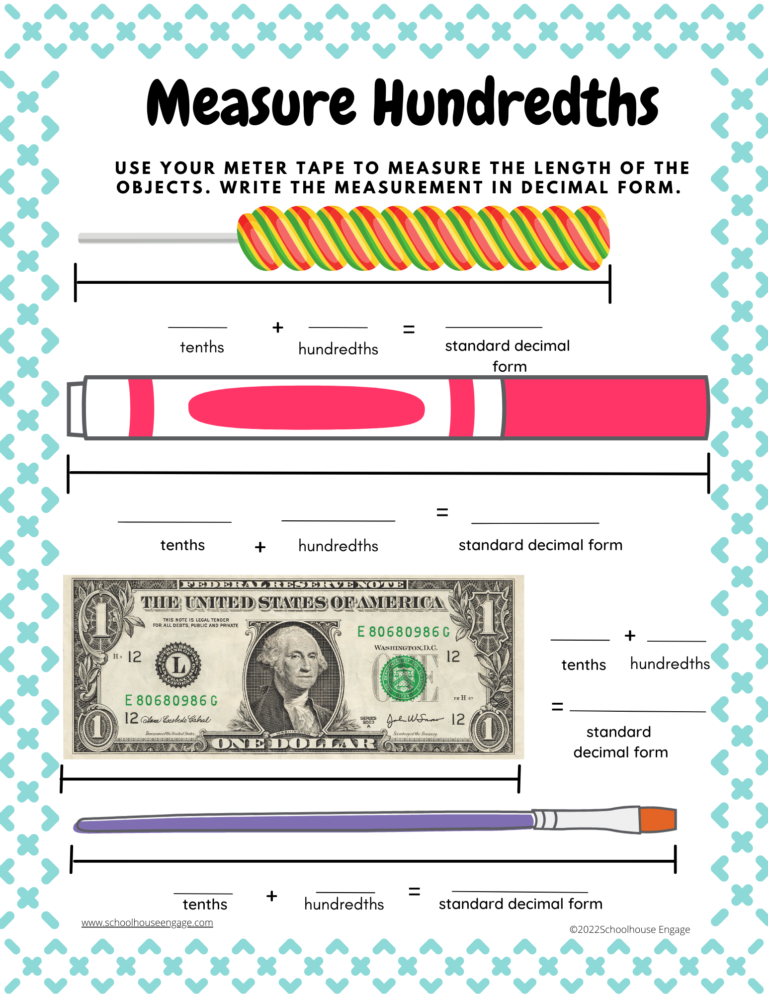
After we practiced how to read and write decimals in word form and fraction form, they were ready to practice measuring items. I created worksheets so they could put their meter tape to use.
They measured different objects and expanded the decimal in order to see the place value of each decimal.
For example, the lollipop pictured left, measured 0.15 but its expanded form is 0.1 + 0.05.
Rounding Decimals to the Nearest Tenths
Now that students had practice with decimals, they were ready to start rounding. Using the meter tape they created was the perfect way for them to understand the true meaning of rounding because they could see the decimals on a number line.
The worksheets I created allowed students to label their number line. Some needed their meter tapes as a tool to help them label and round the decimals.
I explained that if the decimal is above the halfway point, they round up. If it’s below the halfway midpoint, they round down.
Should you teach the rule that if the number next to the digit you are rounding is 5 or more, you round up, and less than 5, you round down? At this time, no.
You want your students to understand the concept of rounding and have a solid foundation. That rule should be taught later in another lesson and it’s for some of your students who have a hard time visualizing the number line.
Once you teach that rule, tell your students “5 or more raise the score, 4 or less, let it rest.”
Teaching Decimal Place Value up to Thousandths
Learning the names of the digits and understanding the meaning behind those names is something new for your students to memorize. Therefore, I recommend teaching the thousandths on the next day.
Instead of just telling your students about the thousandths, ask them to measure something that is not exactly a cm. For example, the pencil pictured to the right is not exactly 11 cm.
I asked my students, how can we measure the pencil so that we have a precise measurement?
My students then created 10 thin lines between 11 cm and 12 cm using a very sharp pencil. These ten lines are thousandths.
Now drawing a thousand lines is cumbersome, but I really wanted the idea that there are a thousand lines in a meter ingrained in my students’ minds.
So I asked them to draw as many as they could within five minutes. They could always draw more later to measure something in thousandths.
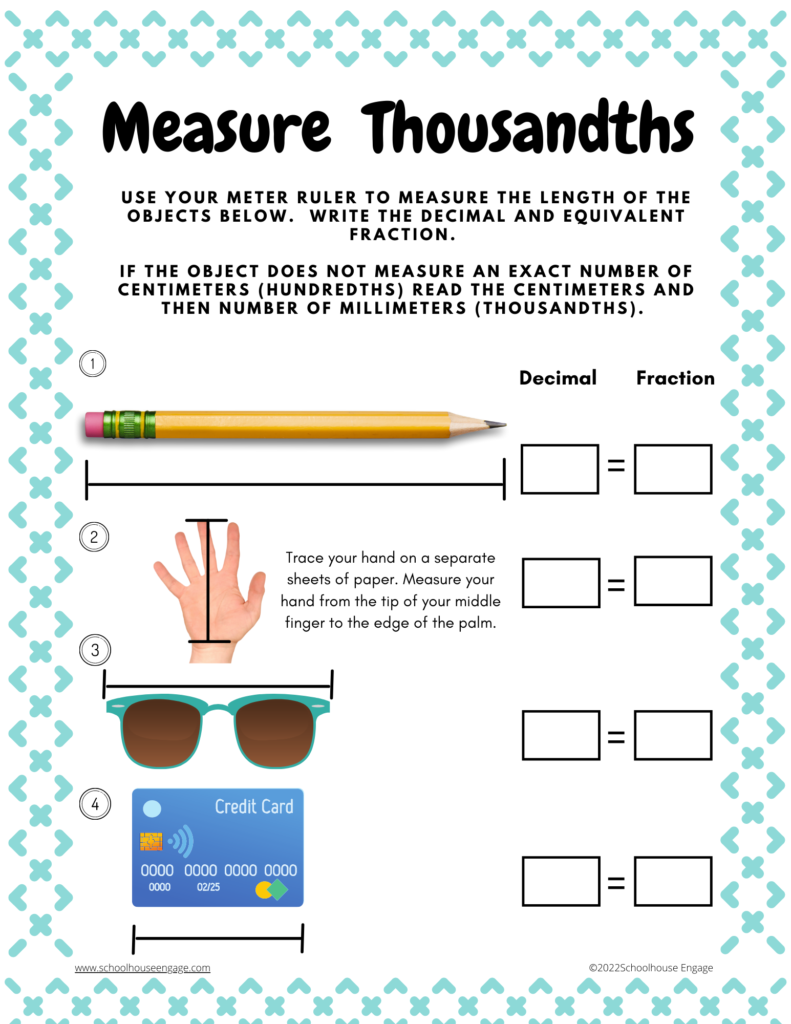
Teach Students About the Thousandths Place Value on a Different Day
After students have a solid understanding of tenths and hundredths, move on to teach thousandths. Have your students label their meter tape by giving them decimals in the thousandths to plot.
Then, let them practice measuring the length and the width of objects of their choice. This is the fun part of learning decimals when kids are able to get out of their desks and move around in the classroom. After they write their measurement they also must decompose the decimal.

Rounding Decimals to the Nearest Hundredths
The following day, I suggest you teach rounding to the nearest hundredths. This is hard for students but with their meter tape to refer to, they will have a concrete way of understanding how to do it.
This is especially important for your visual learners. The Rounding Decimal worksheet will give them the practice of identifying the decimal that is in between.
Students can determine the decimals in the middle by writing the first decimal on the farthest left and writing a 5 right after. This is a pattern that you want to bring to yours students’ attention.
There are many patterns in math and it’s fun when we can recognize them.
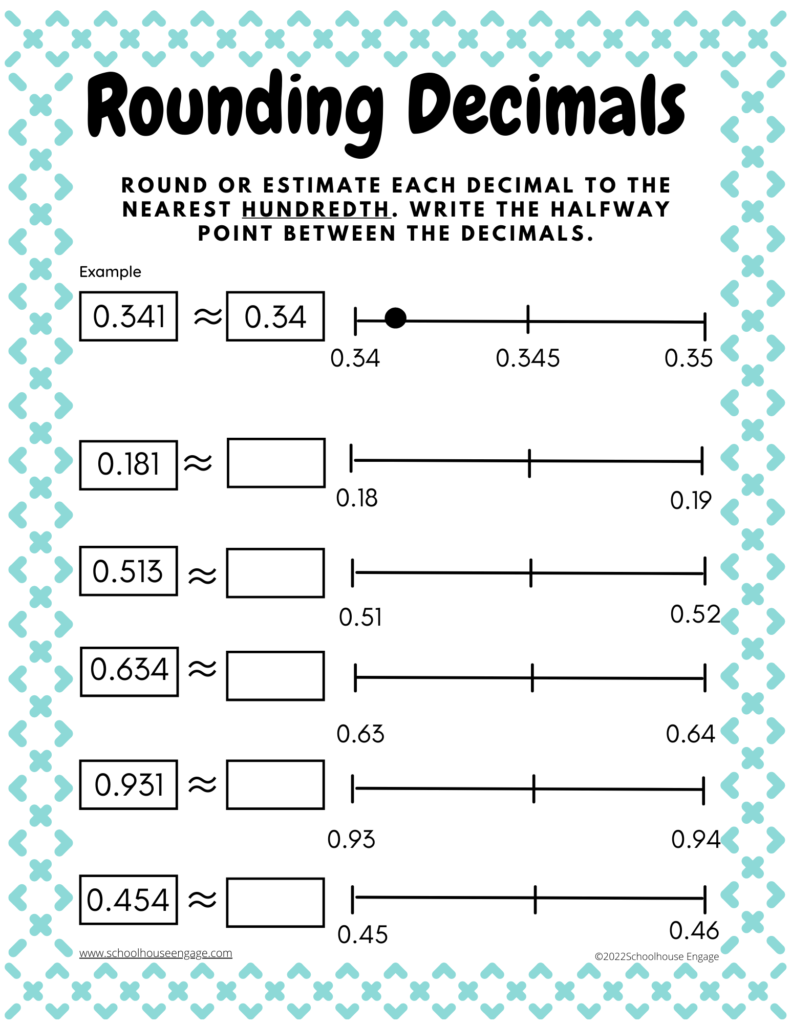

Decimal Mini Anchor Chart for Student Reference
So you teach this amazing lesson and you think, my students totally understand this! All throughout the year they will remember this fabulous lesson and will know decimal place value. Uh, I wish!
Your students will forget some of your lesson. That’s why I created reference sheets to go along with the lesson. These sheets are meant to be glued in a notebook so students can refer back to them throughout the year.
They can also be posted up in the classroom if you enlarge them. I created one to show the definitions for DM,CM, and MM and their decimal and fraction equivalencies. I also created two more for how to round using place value, and how to read and write decimals.
Creating and labeling a meter tape to understand tenths, hundredths, and thousandths has been a game changer for me.
Make sure your students keep their meter tape handy throughout the year, especially when you are reviewing everything you taught once state testing comes along. I hope your kiddos have a fun time creating their meter tapes as much as mine did! You got this! – Giselle

